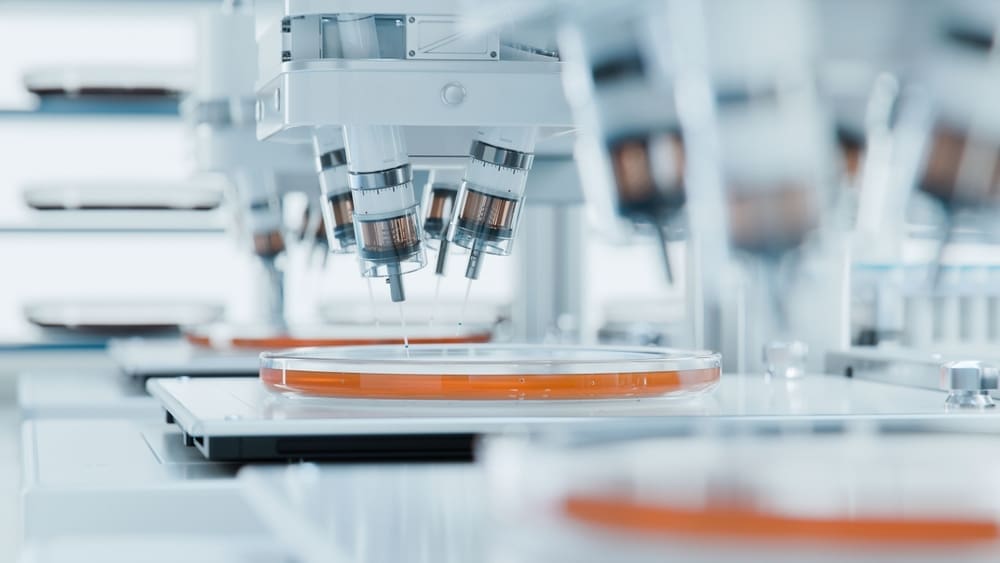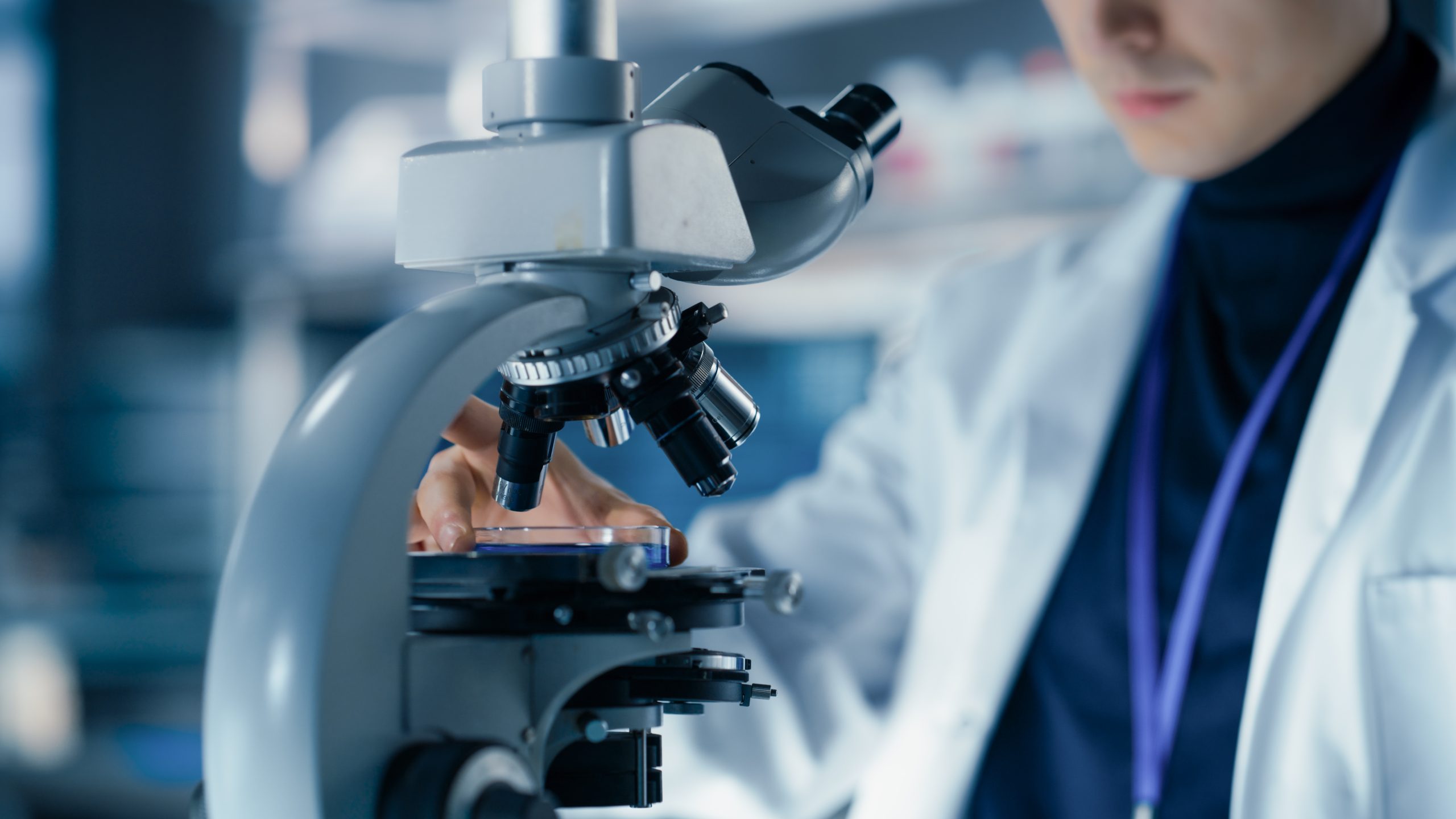Last Updated on September 16, 2025 by daniel
Did you know over 4,000 clinical trials worldwide are looking into stem cell therapy, exploring the potential of various types of stem cells? This new medicine approach gives hope to those with diseases once thought untreatable.
Stem cells are special because they can turn into different cell types. This makes them key in regenerative medicine. Scientists hope to use stem cells to fix or replace damaged tissues and organs. This could lead to new treatments for many health issues.
Key Takeaways
- Stem cell therapy is being explored for treating a wide range of diseases.
- Over 4,000 clinical trials are currently investigating stem cell therapy.
- Stem cells have the ability to differentiate into various cell types.
- Regenerative medicine utilizes stem cells to repair or replace damaged tissues.
- Stem cell therapy offers new hope for patients with previously incurable conditions.
What Stem Cells Are and How They Aid Regeneration
Stem cells are special cells that can turn into different types of cells. They help fix damaged tissues. These cells can become bone, muscle, or nerve cells.
What Makes Stem Cells Unique
Stem cells are unique because they can self-renew and differentiate into many cell types. Self-renewal keeps their numbers steady. Differentiation lets them become specialized cells to fix damaged tissues.
Stem cells are versatile and key for keeping tissues healthy. They help the body heal from injuries and keep tissues working well over time.
The Science Behind Cellular Regeneration
Cellular regeneration is a complex process. It involves stem cells and other cell types working together. When tissues get damaged, stem cells multiply and turn into the needed cells to fix the damage.
Understanding how stem cells work is important. We study the signals that control their behavior. This includes growth factors and other molecules that guide their development and integration into tissues.
Stem cell technologies have improved our knowledge of regeneration. They offer new ways to treat diseases and injuries. By using stem cells, researchers aim to create therapies that can fix damaged tissues. This could greatly improve patient outcomes and quality of life.
Types of Stem Cells Used in Medical Treatments

Stem cells are key in medical treatments because of their many types and uses. They are sorted by where they come from and what cells they can turn into. This is important for their healing power.
Embryonic Stem Cells
Embryonic stem cells come from embryos and can become any cell in the body. This makes them very useful for research and treatments. The ability of embryonic stem cells to become many cell types helps in fixing damaged tissues.
Adult Stem Cells
Adult stem cells are found in grown-up bodies. They can turn into different cell types but not as many as embryonic stem cells. Adult stem cells are used in treatments like bone marrow transplants to help make blood cells.
Induced Pluripotent Stem Cells (iPSCs)
Induced pluripotent stem cells are made from adult cells that can turn into almost any cell type. The creation of iPSCs has opened new doors for personalized medicine. It could change regenerative medicine by giving cells that match the patient’s genes.
The field of using stem cells in medicine is growing fast. Scientists are always learning more about their uses and limits. As research goes on, stem cells could help treat many diseases and conditions.
How Stem Cell Therapy Works in Disease Treatment
Stem cell therapy is a new way to fix damaged tissues. It uses stem cells to help heal. This method is getting a lot of attention for treating many diseases.
Collection and Processing Methods
The first step is to get the stem cells. They can come from bone marrow, fat, or umbilical cord blood. The choice depends on the type needed for treatment.
After getting them, the stem cells are processed to make them ready. This is key to keeping them good and alive. New tech and lab methods help get them ready for use.
Administration Techniques and Protocols
Then, the stem cells are given to the patient. How they are given depends on the disease. Ways include being injected, given through a vein, or directly into the tissue.
The protocols for giving the cells are made to work well and safely. They are made just for each patient. Sometimes, a patient needs more than one treatment.
Stem cell therapy is a hopeful way to treat diseases. It could lead to fixing damaged tissues. As research grows, so will its uses and success.
Blood and Immune System Disorders Treatable with Stem Cells
Stem cell therapy is a new hope for many blood and immune system disorders. These issues affect millions globally, making life harder. Stem cells might offer a cure or a big improvement for these conditions.
These disorders include leukemia, lymphoma, sickle cell anemia, and more. They happen when blood cells or the immune system don’t work right. This leads to serious health problems.
Leukemia and Lymphoma
Leukemia and lymphoma are cancers that harm the bone marrow and lymph system. Stem cell therapy, like hematopoietic stem cell transplantation, can help. It replaces bad bone marrow with healthy stem cells.
- Leukemia Treatment: This method can cure leukemia by swapping out bad bone marrow for good cells.
- Lymphoma Treatment: Stem cell therapy can fix the lymph system after strong chemotherapy.
Sickle Cell Anemia
Sickle cell anemia is a genetic issue that messes with hemoglobin, making red blood cells sickle and break down. Stem cell therapy might cure it by replacing bone marrow with cells that make normal red blood cells.
The steps are:
- Getting stem cells from a donor or the patient’s own cells after fixing the gene.
- Clearing out the bad bone marrow with chemotherapy.
- Putting in the healthy stem cells.
Immunodeficiency Disorders
Immunodeficiency disorders, like SCID, weaken or wipe out the immune system. Stem cell therapy might fix this by adding healthy stem cells that grow into working immune cells.
Stem cell therapy’s benefits for these disorders include:
- Fixing the immune system.
- Less infections.
- Better health and life quality.
Neurological Conditions Responding to Stem Cell Treatment
Stem cell therapy brings new hope to those with severe neurological conditions. Studies show it’s effective in treating many neurological disorders.
Conditions like Parkinson’s disease, multiple sclerosis, and spinal cord injuries are being studied a lot. Stem cell therapy might help fix or replace damaged cells and tissues.
Parkinson’s Disease
Parkinson’s disease causes a loss of dopamine-producing neurons in the brain. Stem cell therapy tries to replace these lost neurons. This could help reduce symptoms like tremors and motor problems.
Key benefits of stem cell therapy for Parkinson’s disease:
- Potential to restore dopamine production
- May improve motor function and reduce symptoms
- Offers a new treatment avenue for patients with advanced disease
Multiple Sclerosis
Multiple sclerosis is an autoimmune disease that harms the central nervous system. It causes demyelination and axonal damage. Researchers are looking into stem cell therapy to fix or replace damaged myelin and help the brain heal.
Current research focuses on:
- Mesenchymal stem cells for their immunomodulatory properties
- Hematopoietic stem cells for their ability to reconstitute the immune system
Spinal Cord Injuries
Spinal cord injuries lead to a loss of function and sensation below the injury. Stem cell therapy aims to help the spinal cord heal and improve function.
Potential benefits include:
- Improved sensory and motor function
- Enhanced neural regeneration
- Better management of secondary complications
Stem cell therapy looks promising for neurological conditions. But, we need more research to know how well it works and if it’s safe. Ongoing clinical trials are key to understanding its full benefits.
Cardiovascular Diseases and Stem Cell Therapy Success Rates
Stem cell therapy is a big step forward in treating heart diseases. These diseases, like heart attacks and heart failure, are common and serious. They affect many people and can be deadly.
Heart Attack Recovery
Studies show stem cell therapy can help some heart attack patients. It uses stem cells to fix or replace damaged heart tissue.
Key benefits of stem cell therapy for heart attack recovery include:
- Potential improvement in heart function
- Enhanced quality of life for patients
- Possible reduction in future cardiovascular events
Heart Failure Treatment Options
Stem cell therapy is also a hope for heart failure patients. Heart failure means the heart can’t pump enough blood. It can happen after a heart attack or because of high blood pressure.
Stem cell therapy tries to make the heart muscle work better. Clinical trials have shown mixed results. Some patients see big improvements in heart function and life quality.
“Stem cell therapy has the power to change how we treat heart diseases. It targets the heart damage at the source.”
In summary, stem cell therapy is a hopeful area for treating heart diseases. It includes heart attack recovery and heart failure. While more research is needed, the early signs are promising. It could greatly help patients.
Orthopedic Applications of Stem Cell Treatments
Stem cell therapy is changing orthopedics by helping repair and grow new tissues. Conditions like degenerative joint diseases cause pain and limit movement. This therapy aims to fix these problems by growing new tissues and reducing swelling.
Joint Repair and Regeneration
Fixing and growing new joints is key in orthopedics. Stem cell therapy is showing great promise in this area. Stem cells can turn into different cell types, like chondrocytes, which are vital for cartilage. This makes stem cell therapy a valuable tool for fixing joint injuries and conditions.
The process starts with taking stem cells from the patient. Then, they are processed and injected into the damaged joint. This can kickstart the body’s healing, leading to better joint function and less pain.
Osteoarthritis Management
Osteoarthritis is a common joint disease that affects many. Managing it often involves treatments to ease symptoms and slow the disease. Stem cell therapy is being looked at as a possible treatment because it can grow new tissues and calm the immune system.
| Treatment Aspect | Conventional Methods | Stem Cell Therapy |
| Tissue Regeneration | Limited ability to regenerate damaged tissues | Promotes regeneration of cartilage and other tissues |
| Inflammation Reduction | Uses anti-inflammatory medications | Can modulate the immune system to reduce inflammation |
The table shows the main differences between traditional treatments and stem cell therapy for osteoarthritis. Traditional methods mainly manage symptoms, while stem cell therapy aims to grow new tissues and improve long-term health.
In conclusion, stem cell therapy is a promising option for treating orthopedic issues like joint repair and osteoarthritis. As research improves, we will learn more about its benefits and risks.
Determining If You’re a Candidate for Stem Cell Therapy
To see if stem cell therapy is right for you, a detailed medical evaluation is needed. This step looks at your health and the condition you’re treating.
Medical Evaluation Process
The evaluation for stem cell therapy includes several important parts:
- Looking at your medical history to find any issues that might change how well treatment works.
- Running tests to see how bad your condition is and how your body might react to stem cells.
- Talking with a doctor who knows about stem cell therapy to go over your options and what you can expect.
Factors Affecting Treatment Eligibility
Several things can decide if you can get stem cell therapy, including:
- The type and how bad your condition is: Some conditions work better with stem cell therapy than others.
- Your overall health: Some health problems might make you not a good fit for stem cell therapy.
- Any treatments you’ve had before: This can affect how your body reacts to stem cell therapy.
Healthcare experts look at these factors to see if stem cell therapy is a good choice for you. It’s a custom plan that takes your health into account to help you get the best results.
The Patient Journey: From Consultation to Recovery
For those thinking about stem cell therapy, knowing the journey is key. It includes finding a good treatment center, the treatment itself, and care after. Each step is important for a smooth recovery.
Finding Qualified Treatment Centers
Finding a good treatment center is the first step. Look for centers with skilled doctors and proven success. Accreditation and certification show a center’s quality.
What to Expect During Treatment
During treatment, you’ll get a detailed check-up to find the best therapy. This might include imaging tests and medical history reviews. It’s to make sure the treatment fits your needs perfectly.
| Treatment Aspect | Description |
| Initial Consultation | Medical evaluation and discussion of treatment options |
| Stem Cell Preparation | Processing and preparation of stem cells for therapy |
| Treatment Administration | Administration of stem cells via injection or infusion |
Post-Treatment Care and Monitoring
After treatment, you’ll need to recover and be monitored. This includes follow-up appointments and rehabilitation. It helps make sure the treatment works well.
Understanding the journey helps you prepare and make smart choices about your care.
FDA-Approved Stem Cell Treatments vs. Experimental Therapies
It’s important for patients to know the difference between FDA-approved stem cell treatments and experimental therapies. This knowledge is key when considering regenerative medicine options.
The FDA makes sure stem cell therapies are safe and work well. Some treatments are approved by the FDA. Others are experimental and are being tested in clinical trials.
Current Regulatory Status
The FDA has rules for stem cell therapies to keep patients safe and encourage new ideas. FDA-approved treatments have been tested a lot. They are safe and work for certain health problems.
On the other hand, experimental therapies are in clinical trials. Their safety and effectiveness are not yet confirmed. People in clinical trials must meet certain requirements and give their consent.
Navigating Clinical Trials
Finding your way through clinical trials for stem cell therapies can be tough. ClinicalTrials.gov is a great place to look for trials and learn about who can join.
It’s vital to talk to your doctor and a stem cell therapy expert. They can help you understand the good and bad of both FDA-approved treatments and experimental therapies. This way, you can make a smart choice about your treatment.
By staying informed and working with your healthcare team, you can make a good decision about your stem cell therapy options.
Risks, Limitations, and Ethical Considerations
Stem cell therapy has made big strides, but it comes with risks and ethical questions. Like any medical treatment, it can have side effects and complications.
Potential Side Effects and Complications
Stem cell therapy can cause side effects, from mild to severe. Some possible issues include:
- Immune Rejection: The body might reject the stem cells, causing problems.
- Tumor Formation: There’s a chance stem cells could grow into tumors, if they don’t differentiate right.
- Infection: As with any invasive treatment, there’s a risk of infection.
Treatment Limitations Need to Realize
Stem cell therapy is promising, but it’s not for every condition. Its success can vary a lot from person to person.
Some main limitations are:
- The quality and availability of stem cells greatly affect the therapy’s success.
- The therapy can be very expensive, making it hard for many to afford.
- The rules around stem cell therapy are changing and differ by country.
It’s important for patients to know about these risks and limitations before trying stem cell therapy. Talking to a qualified doctor is key to making a good choice.
Conclusion: The Future of Stem Cell Treatments
The field of stem cell therapy is growing fast. New research and treatments are being developed all the time. This makes the chance of curing many diseases with stem cells look very promising.
Stem cell research is leading to new, hopeful treatments. It gives patients with hard-to-treat conditions a glimmer of hope. Many clinical trials are underway to check if these treatments are safe and work well.
We can look forward to more exciting things in stem cell therapy as it grows. It has the power to change how we treat many diseases. This could greatly improve healthcare in the future.
What are stem cells and how do they work?
Stem cells are special cells that can turn into different types of cells. They help in healing and fixing damaged tissues. They are used to treat many diseases, from blood issues to brain disorders.
What types of stem cells are used in medical treatments?
There are several types of stem cells used in medicine. These include embryonic, adult, and induced pluripotent stem cells (iPSCs). Each type has its own uses and benefits.
How is stem cell therapy administered?
Stem cell therapy starts with collecting and processing stem cells. Then, they are given to the body through injections or infusions. The method used depends on the disease being treated.
What blood and immune system disorders can be treated with stem cells?
Stem cells can help with blood and immune system problems. This includes treating leukemia, lymphoma, and sickle cell anemia. They offer a new hope for these conditions.
Can stem cells be used to treat neurological conditions?
Yes, stem cells may help with neurological diseases. This includes Parkinson’s disease, multiple sclerosis, and spinal cord injuries. Scientists are studying their benefits.
What is the success rate of stem cell therapy for cardiovascular diseases?
Stem cell therapy shows promise for heart diseases. It can help in recovering from heart attacks and treating heart failure. Success rates vary based on the condition and patient.
How do I determine if I’m a candidate for stem cell therapy?
To see if you’re a good candidate for stem cell therapy, you need a medical check-up. Your health, medical history, and the disease you have will be looked at.
What can I expect during the stem cell therapy process?
The stem cell therapy process includes a consultation, treatment, and aftercare. You’ll need to find a qualified center and follow their advice.
Are stem cell treatments FDA-approved?
Some stem cell treatments are FDA-approved, while others are not. It’s important to know the treatment’s status and the risks involved.
What are the risks and limitations of stem cell therapy?
Stem cell therapy may have risks and limitations. This includes side effects, complications, and treatment limits. It’s important to consider these before treatment.
What is the future of stem cell treatments?
The future of stem cell treatments looks bright. Ongoing research aims to find new therapies. As the field grows, we’ll see more treatments for different diseases.





